Description
The instruction for medical use of medicine Captopril of STADA the Trade name Captopril of STADA the International unlicensed name Captopril Dosage Form of the Tablet of 12.5 mg, 25 mg and 50 mg Structure One tablet contains active agent – captopril of 12.5 mg, 25 mg or 50 mg, excipients: lactoses monohydrate, starch corn prezhelatinizirovanny, cellulose microcrystalline, stearic acid. The description of the Tablet of round shape, with a flat surface, white color, with risky on both parties (for a dosage of 12.5 mg). Tablets of round shape, with a flat surface, white color, with crosswise risky on both parties (for dosages of 25 mg and 50 mg). Pharmacotherapeutic group the Drugs influencing a system renin-angiotensin. Enzyme Angiotensin-converting (EAC) inhibitors. Captopril. The ATX C09AA01 code the Pharmacological Pharmacokinetics Later properties of oral administration captopril is quickly soaked up. The maximum concentration in blood is reached approximately in one hour. The minimum absorption – about 75%. Existence of food in a digestive tract reduces absorption approximately by 30 – 40%. Linking with proteins of blood plasma makes about 25 – 30%. The peak of concentration in plasma is reached in 60-90 minutes. Elimination half-life makes about 2 hours. More than 95% of the absorbed dose of captopril are brought with urine within 24 hours, out of them 40-50% in not changed look and 50-60% in the form of inactive metabolites of a disulfide (a disulfide of captopril and a disulfide captopril cysteine). Reduced renal function can lead to drug accumulation. Thus, patients with reduced renal function have to have a dosage the dosing interval is reduced and/or is extended. Captopril does not get through a blood-brain barrier. The pharmacodynamics Captopril is inhibitor of angiotensin-converting enzyme. The inhibition of angiotensin-converting enzyme (APF) leads to reduction of formation of the angiotensin-II in blood plasma possessing vasoconstrictive action in fabrics and blood plasma owing to what there is a decrease in secretion of Aldosteronum in adrenal glands. Thereof the diuresis and removal of sodium amplifies, potassium level in blood serum increases, water exchange is normalized. The lack of negative back reaction of angiotensin-II on secretion of renin leads to increase in activity of renin in blood plasma. Also angiotensin-converting enzyme destroys bradykinin to inactive metabolites. The inhibition of APF leads to increase in activity of the circulating and local kallikrein-kinin system which promotes expansion of peripheral vessels by activation of a prostaglandinovy system. This mechanism takes part in hypotensive effect of APF inhibitors. At patients with arterial hypertension captopril leads to lowering of arterial pressure in horizontal and vertical position, without causing increase in heart rate, a delay of sodium and water. At most of patients the hypertensive effect is noted in 15-30 minutes after captopril use. The maximum lowering of arterial pressure is reached usually in 60-90 minutes. For achievement of the maximum therapeutic effect several weeks can be required. The maximum lowering of arterial pressure for a certain dose of captopril is noted after 3-4 weeks of therapy. Effects of a lowering of arterial pressure at captopril and thiazide diuretics develop. Captopril causes considerable decrease in peripheric arterial resistance. At the same time there are no clinically significant changes of a renal blood-groove and glomerular filtration rate. At reception of the recommended daily dose, antihypertensive action remains even at long therapy. The short-term termination of intake of captopril does not lead to fast, excessive increase in arterial blood pressure (ricochet). Use of captopril causes reduction of a hypertrophy of a left ventricle. At patients with heart failure captopril reduces peripheric system resistance and increases venous capacity. It leads to decrease cordial before – and afterloads (decrease in volume of filling of a left ventricle). During treatment the increase in warm emission, the index of cardiac performance and tolerance to physical activity happens captopril. Indications – arterial hypertension – chronic heart failure (as a part of complex therapy) the Route of administration and doses the Dose Captopril of STADA is selected individually depending on a condition of the patient and response of arterial blood pressure. The recommended maximum dose makes 150 mg. Arterial hypertension the Recommended initial dose makes on 12.5 mg 2 times a day. The dose can be increased gradually with an interval, at least, of 2 weeks, up to 100-150 mg a day divided into two doses necessary for achievement of desirable arterial blood pressure. Captopril can be used one or in a combination with other antihypertensive drugs, especially with thiazide diuretics. The dosing mode can be sufficient at addition of the accompanying antihypertensive drugs, such as thiazide diuretics once a day. At patients with very active renin-angiotensin-aldosteronovoy a system (hypovolemia, renovascular hypertensia, a warm decompensation) is more preferable to begin 6.25 mg or 12.5 mg with a single dose. It is more preferable to begin such therapy under careful medical observation. These dosages will be accepted further two times a day. The dose can gradually increase to 50 mg a day in one or two receptions and if necessary to 100 mg a day in one or two receptions. Heart failure Treatment of heart failure captopril should be begun under careful medical observation. A usual starting dose of 6.25 mg or 12.5 mg two or three times a day. Titration of a maintenance dose (75-150 mg a day) has to be carried out on the basis of the answer of the patient, the clinical status and tolerance, to the maximum dose of 150 mg a day divided into two receptions. The dose should be increased gradually with an interval of, at least, 2 weeks for assessment of the answer of the patient. The dosage at patients of advanced age (65 years are more senior) the Recommended initial dose makes on 6.25 mg 2 times a day. For achievement of sufficient control the dose needs to be titrated depending on response of arterial blood pressure and to adhere to lower. Reduced function of kidneys the Recommended daily doses for patients with reduced function of kidneys: Clearance of creatinine (ml/min. / 1.73 sq.m) the Initial daily dose (mg) the Maximum daily dose (mg) & gt, 40 21-40 10-20 & lt, 10 25-50 25 12,5 6,25 150 100 75 37,5 Interval of dosing it is necessary to increase. In need of purpose of the accompanying therapy by diuretics to patients with a heavy renal failure, preference is given to loopback diuretics (furosemide), than thiazide. The dosage at children Use Captopril of STADA at children and teenagers of 18 years is also younger it is not recommended since the efficiency and safety of captopril was not completely established. Route of administration: Captopril of STADA can be applied to, in time and after meal. Side effects – nausea, vomiting, irritation of a stomach, an abdominal pain, anorexia, diarrhea, a constipation, dryness in a mouth, stomatitis / aphthous ulcerations, a glossitis, a round ulcer, pancreatitis – dry, unproductive cough, dispnoe, a bronchospasm, rhinitis, an allergic alveolitis / eosinophilic pneumonia, a stethalgia – an itching with rash or without, rash, an alopecia, a Quincke’s disease, urtikarny rash, Stephens-Johnson’s syndrome, a multiformny erythema, photosensitivity, an erythrosis, pemfigoidny reaction, exfoliative dermatitis – decrease in taste, dizziness, drowsiness, fatigue, an indisposition, fever, a headache, paresthesia, cerebrovascular disorders (a stroke, a faint), sleep disorders, confusion of consciousness, a depression, disorders of vision – tachycardia or a tachyarrhythmia, stenocardia, hypotension, Reynaud’s syndrome, reddening, pallor, cardiac arrest, cardiogenic shock – a renal failure, a polyuria, an oliguria, the speeded-up urination, a proteinuria, a nephrotic syndrome – depression of function of a liver, a cholestasia, jaundice, hepatitis, necrosis of hepatic cells, the raised liver enzymes and bilirubin – increase in potassium, decrease in sodium in blood plasma, the increase in residual nitrogen of urea, serumal creatinine and bilirubin, decrease in hemoglobin, a hematocrit, leukocytes, thrombocytes in blood, positive credits on antinuclear antibodies, a proteinuria, an eosinophilia accelerated by SOE – myalgia, an arthralgia – impotence, the Contraindication gynecomastia – hypersensitivity to captopril or other inhibitor of angiotensin-converting enzyme in the anamnesis – hypersensitivity to any component of drug – the vascular hypostasis associated with the previous therapy by APF inhibitor in the anamnesis – a hereditary / idiopathic Quincke’s disease – the second and third trimester of pregnancy – a lactation Medicinal interactions APF Inhibitors reduce the potassium losses caused by diuretics. The preserving diuretics (Spironolactonum, Triamterenum, amiloride), drugs of potassium and kaliysoderzhashchy substitutes of salt can lead potassium to significant increase in content of potassium in blood plasma. If at the revealed hypopotassemia the simultaneous use of such drugs with Captopril of STADA is shown, they should be applied with care and to often control potassium level in blood plasma. At use of loopback or thiazide diuretics with Captopril of STADA the risk of developing the profound hypotension, especially after the first dose of diuretic, a hypopotassemia, renal failures increases. The previous treatment by thiazide or loopback diuretics in high doses before therapy by Captopril of STADA causes decrease in volume of the circulating blood and increases risk of developing hypotension. This effect can be reduced by cancellation of diuretics, increase in volume or consumption of salt, or to use lower initial dose of Captopril of STADA. However, clinical medicinal interactions in specific researches with a hydrochlorothiazide or furosemide were not revealed. At simultaneous use with lithium the concentration of lithium and toxicity increases. The accompanying use of thiazide diuretics aggravates the available risk of development of toxicity at a combination of lithium and APF inhibitors. In this regard use of this combination is not recommended. Simultaneous use of some anesthetics, tricyclic antidepressants and antipsychotic drugs with APF inhibitors enhances hypotensive effect. Therefore, it is necessary to avoid use of such combination. At use together with high doses of Allopyrinolum, procaineamide, system kortikoid, cytostatic or immunosuppressive drugs the risk of development of a leukopenia increases. At simultaneous use with non-steroidal anti-inflammatory drugs the antihypertensive effect of Captopril of STADA decreases, the risk of depression of function of kidneys, including development of a renal failure, increase in potassium concentration in blood plasma, especially at patients with reduced renal function increases. To apply this combination with care, especially at elderly patients. Patients need to apply adequate amount of liquid and to carry out regular control of function of kidneys. Sympathomimetics reduce antihypertensive effect of APF inhibitors. Β-adrenoblockers, blockers of calcium channels mutually enhance hypotensive effect. Gidralazin it is not predicted mutually enhances hypotensive effect. Combined use of this combination is not recommended. Against the background of captopril the concentration of digoxin in plasma increases. At use with Azathioprinum the risk of developing anemia, a leukopenia increases. Nitroglycerine mutually enhances hypotensive and anti-anginal effects. Orlistat promotes reduction of efficiency of captopril that can lead to increase in the ABP, hypertensive crisis, the case of a cerebral hemorrhage is described. Combined use with interleukin-3, minoksidily, Sodium nitroprussidum, pergolidy promotes strengthening of antihypertensive effect. At use with interferon alpha 2а, interferon a beta development of a heavy granulocytopenia is possible. At combined use with Trimethoprimum raises risk of development of a hyperpotassemia, an osobennoa at patients with renal failures. Chlorpromazinum increases risk of developing orthostatic hypotension. At combined use with cyclosporine the risk of developing an acute renal failure, an oliguria increases. Erythropoietins reduce efficiency of antihypertensive drugs. Simultaneous use of APF inhibitors with antidiabetic drugs (insulin, oral hypoglycemic drugs) causes the strengthened decrease in glucose of blood with risk of development of a hypoglycemia, especially within the first weeks of combination therapy and in patients with a renal failure. Combined use with antacids (aluminum hydroxide, magnesium hydroxide, simetikon) reduces captopril absorption thereof they need to be accepted separately with a period of time not less than 2 hours. Ethanol strengthens hypotension therefore for the period of treatment it is necessary to refuse consumption of alcoholic beverages. Special instructions With extra care should be applied at patients with autoimmune diseases in view of increase in risk of emergence of a neutropenia and an agranulocytosis. At patients with arterial hypertension at whom decrease in volume and/or content of sodium is noted in connection with diuretics, the diet, salt restriction, diarrhea, vomiting or a hemodialysis strengthened by therapy, symptomatic hypotension can develop. Therefore, before use of Captopril of STADA it is necessary to modify the reduced volume and/or sodium and to apply lower initial dose. After reception of the first dose and also at increase in a dosage of captopril and/or loopback diuretics these patients have to be within about 2 hours under medical control to prevent uncontrollable emergence of hypotonic reaction. The patients with heart failure having higher risk of developing hypotension should begin therapy with Captopril of STADA with lower initial dose and with care to increase its dose or a dose of diuretic. In an excessive lowering of arterial pressure at patients with coronary heart disease or a cerebrovascular disease the risk of developing of a myocardial infarction and stroke increases. At development of hypotension the patient has to be in horizontal position and if necessary it is necessary to make completion of volume intravenous administration of normal saline solution. It is necessary to control constantly the level of potassium and creatinine at patients with a renal failure. To patients with a heavy renal failure and to elderly patients (65 years are more senior) in an initial stage of treatment Captopril of STADA has to be applied only in the conditions of intensive control of arterial blood pressure and/or representative laboratory indicators. At development of a Quincke’s disease of the face, extremities, lips, mucous, language, the glottis or a throat need to stop immediately intake of Captopril of STADA, to carry out emergency treatment, the patient has to be hospitalized and be under observation not less than 12-24 hours, to permission of symptomatology as the Quincke’s disease of language, a glottis and a throat can have death. The unproductive, persistent cough developing at intake of APF inhibitors is allowed after the therapy termination. Seldom, at use of APF inhibitors, the syndrome with not clear mechanism of development which begins with cholestatic jaundice and progresses with development of lightning necrosis of a liver and sometimes death is noted. Patients at whom jaundice and increase in liver enzymes developed need to cancel administration of drug and to provide the appropriate medical care. The patients with a renal failure, diabetes accepting kaliysberegayushchy diuretics, the potassium drugs, kaliysoderzhashchy substitutes of salt or other drugs increasing potassium level in blood plasma have high risk of development hyper potassium
and. Therefore, they need to control blood plasma potassium level constantly. It is not recommended to use a combination Captopril of STADA and lithium. With care to appoint to patients with obstruction of the valve of a left ventricle and the taking-out path of a left ventricle and also it is not necessary to apply at cardiogenic shock and considerable disturbance of a hemodynamics. At the patients accepting APF inhibitors, including Captopril of STADA, the neutropenia / agranulocytosis, thrombocytopenia and anemia can be noted. With normal function of kidneys and lack of the complicating factors the neutropenia meets at patients seldom. Patients need to use captopril of STADA with care with the collagenoses, immunosuppressor therapy receiving treatment by Allopyrinolum and procaineamide or at a combination of these factors, especially at patients with predisposition to depression of function of kidneys. At such patients the heavy infection which in some cases is not responding to antibacterial therapy can develop. Before therapy at such patients it is necessary to spend calculation of quantity of white blood cells each 2 weeks, within the first three months of treatment by Captopril of STADA and further with frequency. Patients should report about any symptoms of an infection (for example, a sore throat, temperature increase). At existence or suspicion on a neutropenia (reduction of neutrophils less than 1000/mm3) it is necessary to cancel treatment by Captopril of STADA and other accompanying drugs. After cancellation Captopril of STADA at most of patients the quantity of neutrophils quickly returns to norm. At patients with a renal failure or at use of rather high doses of APF inhibitors the proteinuria can develop. The patients having in the anamnesis of a disease of kidneys should carry out definition of a proteinuria before use of Captopril of STADA and further with frequency. At patients with extensive surgical interventions or during treatment by the anesthetics reducing arterial blood pressure hypotension which can be modified completion of volume of the circulating blood can develop. At the patients with diabetes receiving oral antidiabetic means or insulin it is necessary to control blood glucose level, especially within the first month of treatment by Captopril of STADA. As Captopril of STADA contains lactose, it is not necessary to appoint it in a congenital galactosemia, malabsorption of glucose and a galactose or a lactose intolerance syndrome. Captopril of STADA can cause the false positive test of urine for acetone. The pregnancy period Captopril of STADA is not recommended to be applied during pregnancy. When planning or the confirmed pregnancy it is necessary to pass to alternative treatment immediately. Features of influence of medicine on ability to run the vehicle or potentially dangerous mechanisms At use of Captopril of STADA, depending on individual predisposition, the ability to run the vehicle or potentially dangerous mechanisms, especially in an initiation of treatment, at change of a dosage and the use with alcohol can decrease. Overdose Symptoms: heavy hypotension, shock, stupor, bradycardia, electrolytic disturbances, renal failure. Treatment: therapy of intoxication in case of recent use events for prevention of absorption (for example, gastric lavage, administration of absorbents and sodium sulfate within 30 minutes from reception) and the accelerated removal have to be held. At development of hypotension the patient has to be placed in a shock position and quickly it is necessary to make completion of salts and volume. It is necessary to consider treatment by angiotensin-II. Bradycardia and excess vagal reaction it is necessary to treat administration of atropine. Use of a pacemaker can be considered. Specific antidote does not exist. Captopril is removed at a hemodialysis. The form of release and packing On 10 tablets place in blister strip packaging from a film of the polyvinylchloride and printing aluminum foil varnished. On 3 planimetric packs together with the instruction for medical use in the state and Russian languages put in a pack from cardboard. To Store storage conditions at a temperature not above +25 °C. To store out of children’s reach! 4 years not to apply a period of storage after an expiration date. Prescription status According to the prescription the Producer / Stadastrasse 2 – 18 Upakovshchik ShTADA Artsnaymittel AG of D-61118 Bud Vilbel, Germany a web the website: http://www.stada.de Name and country of the holder of the registration certificate of STADA Artsnaymittel AG Stadastrasse 2 – 18 of D-61118 Bud Vilbel, Germany web website: http://www.stada.de the Address of the organization accepting in the territory of the Republic of Kazakhstan claims from consumers on quality of products (goods) and responsible for post-registration observation of safety of medicine: Representative office of JSC Nizhpharm in PK 050043, the Republic of Kazakhstan, Almaty, mdt. Khan-Taniri, 55b
to Develop
Additional information
| Ingredient |
|---|





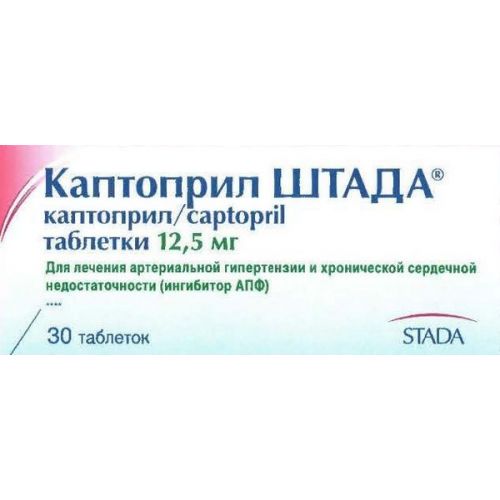
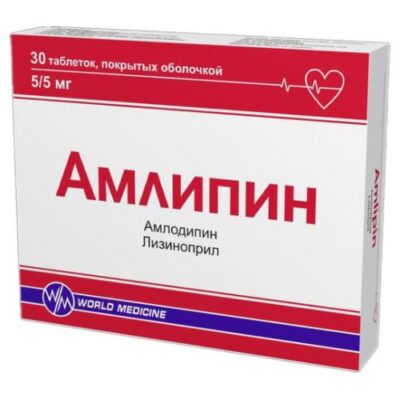
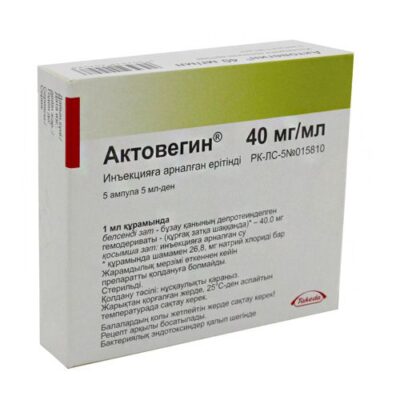
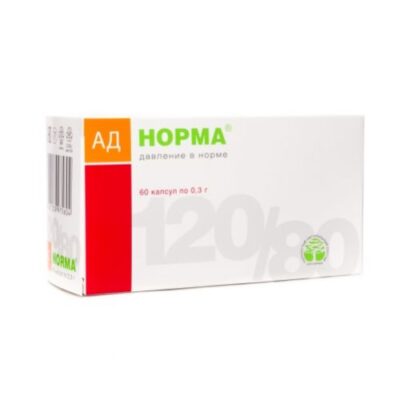
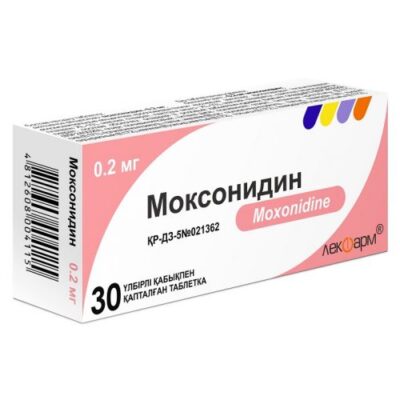
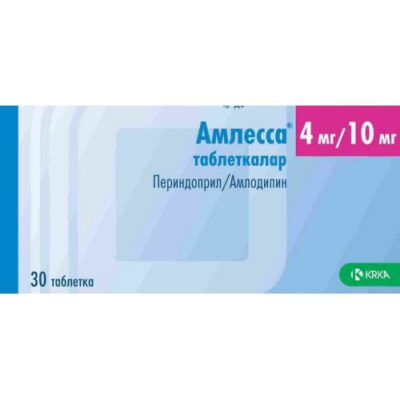
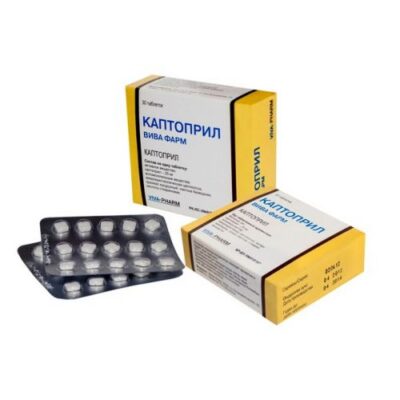
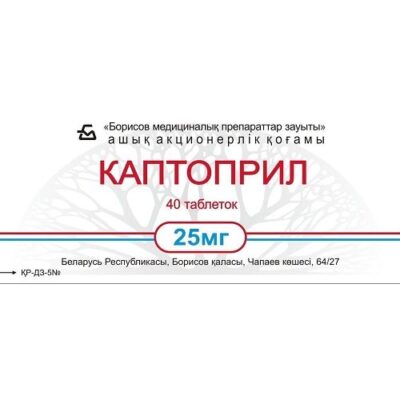
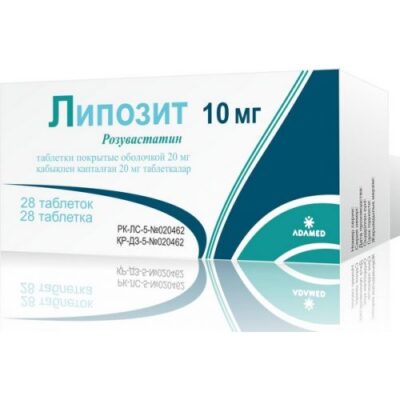
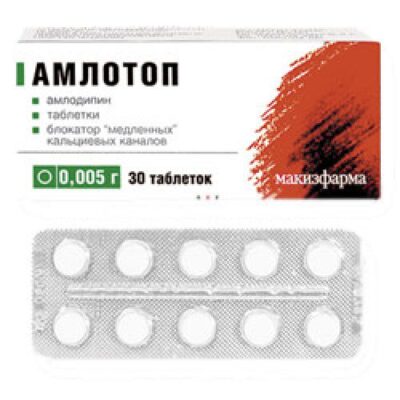
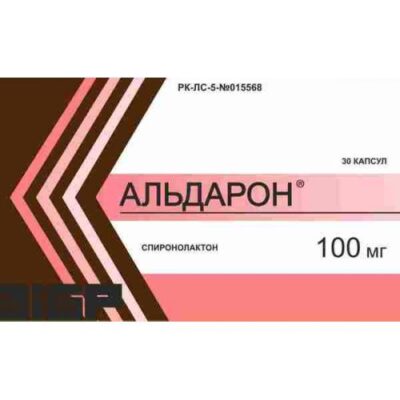






Reviews
There are no reviews yet.